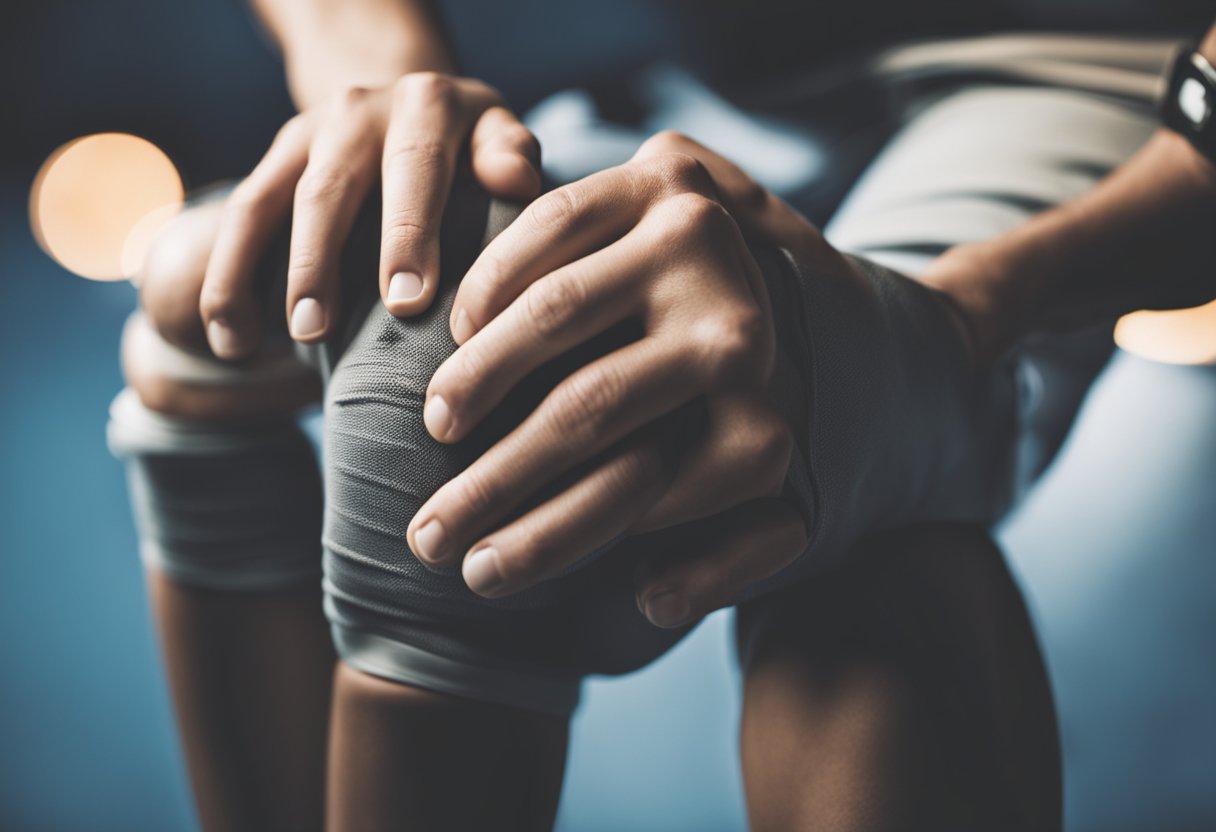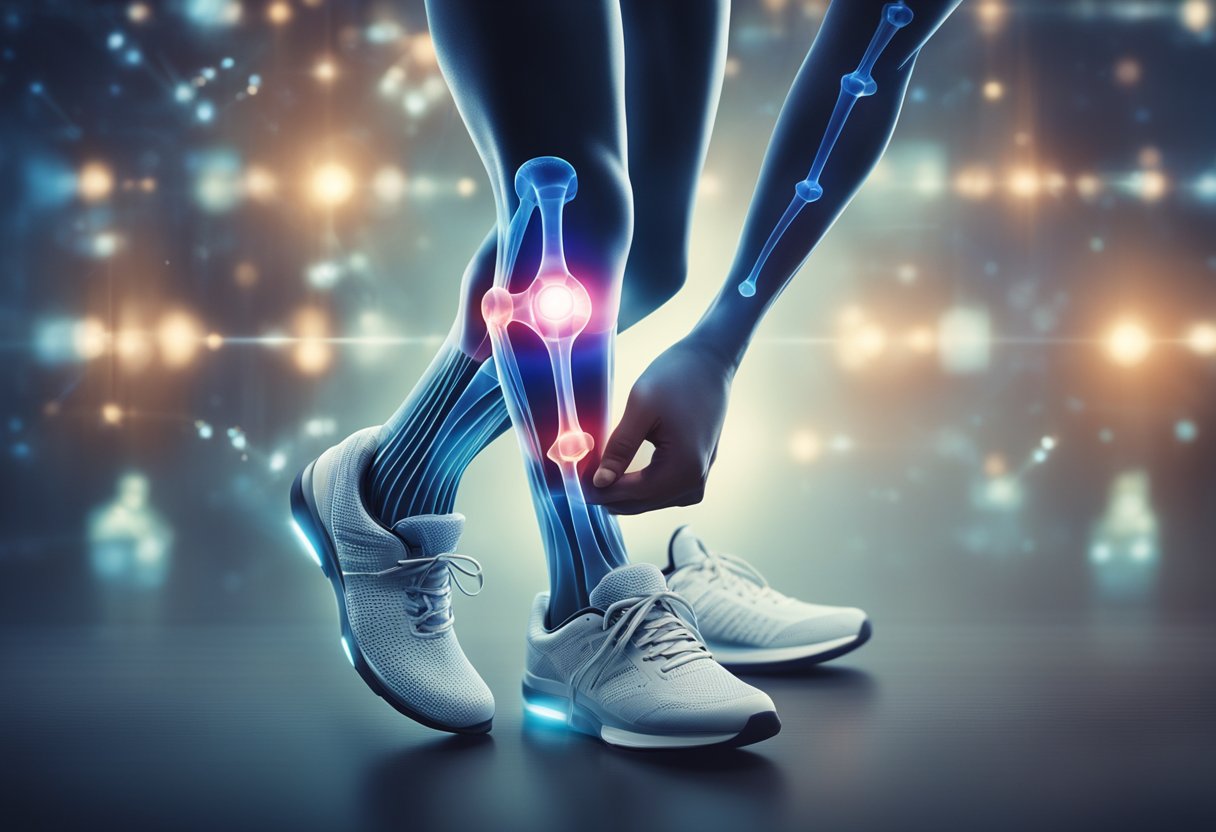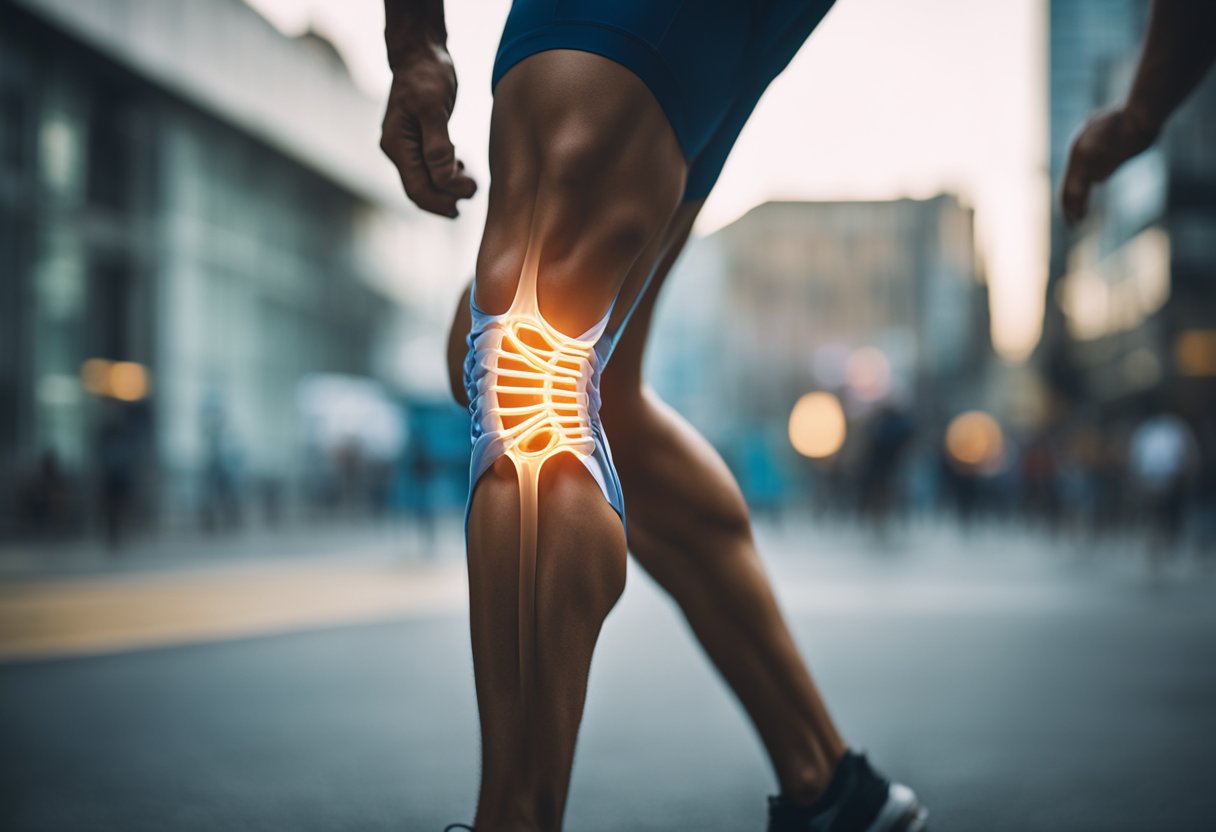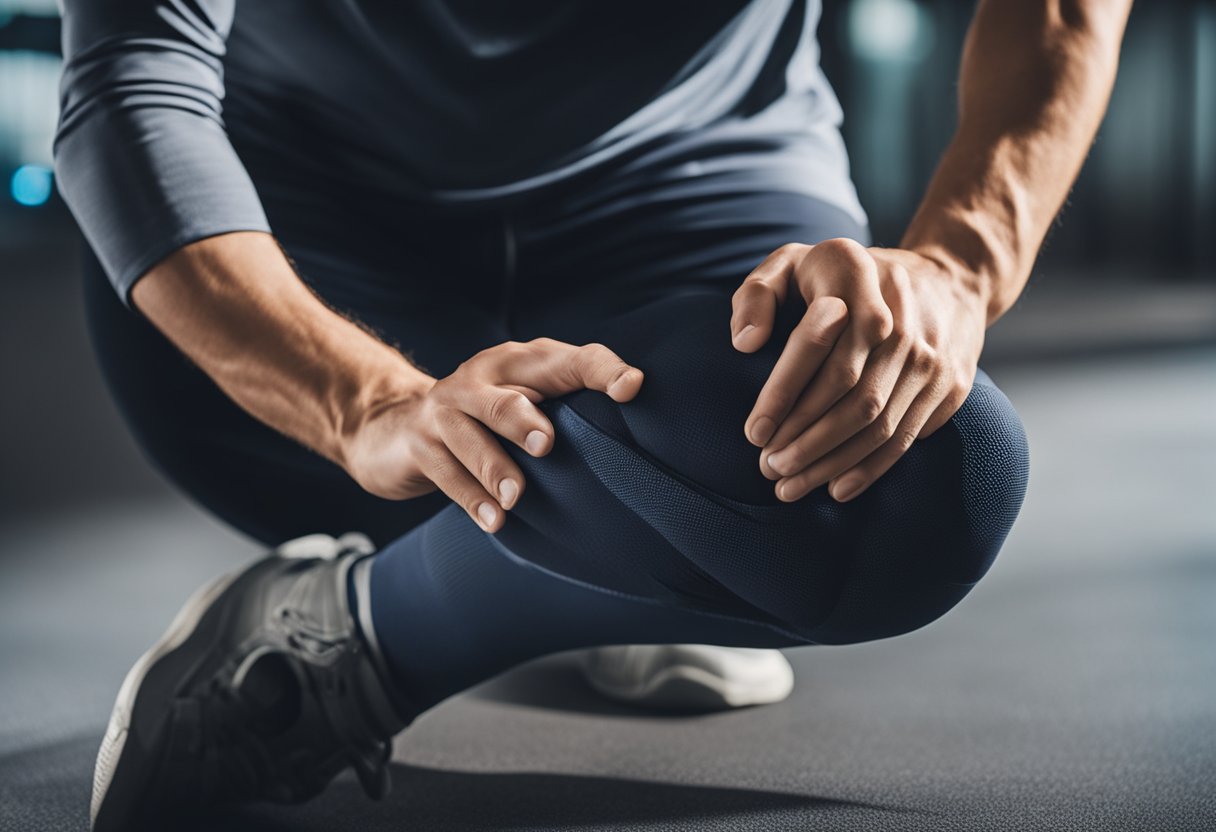Knee Hurt for No Apparent Reason? Here’s What You Need to Know
If you’ve been experiencing knee pain, you’re not alone. Knee pain is a common complaint that affects people of all ages and backgrounds. In fact, according to the Mayo Clinic, knee pain is one of the most common reasons people seek medical attention.

Understanding the cause of your knee pain is essential to finding the right treatment. Knee pain can be caused by a variety of factors, including injury, overuse, and medical conditions such as arthritis. The knee joint is made up of bones, cartilage, tendons, and ligaments, all of which can be affected by pain and discomfort.
At times, knee pain can be severe enough to limit your range of motion, stability, and mobility. It may also make it difficult to bear weight on the affected leg. In this article, we’ll explore the causes, diagnosis, and treatment options for knee pain, as well as some of the latest research and current health topics surrounding this common ailment.
Key Takeaways
- Knee pain is a common complaint that affects people of all ages and backgrounds.
- Understanding the cause of your knee pain is essential to finding the right treatment.
- Knee pain can limit your range of motion, stability, and mobility, and may make it difficult to bear weight on the affected leg.
Understanding Knee Pain
Knee pain is a common problem that affects many people. It can be caused by a variety of factors, including injury, arthritis, and aging. In this section, we will discuss the symptoms, causes, and types of knee conditions that can lead to pain and discomfort.
Symptoms of Knee Pain
The symptoms of knee pain can vary depending on the underlying cause. Some common symptoms include:
- Pain
- Swelling
- Redness
- Popping or cracking sounds
- Stiffness
- Instability
- Warmth and tenderness
- Weakness and fatigue
If you are experiencing any of these symptoms, it is important to seek medical attention to determine the cause of your knee pain.
Causes of Knee Pain
Knee pain can be caused by a variety of factors, including:
- Injury: A knee injury can cause damage to the bones, ligaments, or cartilage in the knee joint. This can result in pain, swelling, and instability.
- Arthritis: Osteoarthritis is a common type of arthritis that can affect the knee joint. It is caused by wear and tear on the joint over time and can result in pain, stiffness, and swelling.
- Aging: As we age, the cartilage in our joints can wear down, leading to knee pain and stiffness.
- Meniscus: The meniscus is a piece of cartilage that acts as a cushion between the bones in the knee joint. A tear in the meniscus can cause pain, swelling, and stiffness.
- Bursa: A bursa is a small sac of fluid that cushions the joint. Bursitis occurs when the bursa becomes inflamed, causing pain and swelling.
- Gout: Gout is a type of arthritis that occurs when uric acid crystals build up in the joints, causing pain and inflammation.
- Rheumatoid arthritis: Rheumatoid arthritis is an autoimmune disorder that can affect the knee joint, causing pain, swelling, and stiffness.
- Tendinitis: Tendinitis is inflammation of a tendon, which can cause pain and stiffness in the knee joint.
Types of Knee Conditions
There are many different types of knee conditions that can cause pain and discomfort. Some common types include:
- Knee bursitis: Knee bursitis occurs when the bursa in the knee becomes inflamed, causing pain and swelling.
- Patellar tendinitis: Patellar tendinitis is inflammation of the tendon that connects the kneecap to the shinbone. This can cause pain and stiffness in the knee joint.
- Meniscus tear: A meniscus tear is a tear in the cartilage that cushions the knee joint. This can cause pain, swelling, and stiffness.
- Infection: Infection in the knee joint can cause pain, swelling, and redness.
- Iliotibial band syndrome: Iliotibial band syndrome occurs when the band of tissue that runs from the hip to the knee becomes tight and inflamed, causing pain on the outside of the knee.
- Types of arthritis: There are many different types of arthritis that can affect the knee joint, including osteoarthritis, rheumatoid arthritis, and septic arthritis.
- Knee injury: A knee injury, such as a sprain or dislocation, can cause pain, swelling, and instability.
- Pes anserine bursitis: Pes anserine bursitis is inflammation of the bursa on the inside of the knee, causing pain and swelling.
In conclusion, knee pain can be caused by a variety of factors, including injury, arthritis, and aging. If you are experiencing knee pain, it is important to seek medical attention to determine the underlying cause and receive appropriate treatment.
Diagnosing Knee Pain

If you are experiencing knee pain, it is important to seek medical attention to properly diagnose the underlying cause. A medical professional, such as a doctor or healthcare provider, will perform a physical examination and may order imaging tests to determine the cause of your knee pain.
Physical Examination
During a physical examination, the medical professional will assess your knee for any visible signs of injury or inflammation. They may also ask you to perform certain movements to evaluate your range of motion and identify any areas of tenderness or pain.
Some common tests that may be performed during a physical examination include:
- Lachman test: This test is used to evaluate the stability of the anterior cruciate ligament (ACL).
- McMurray test: This test is used to evaluate the presence of a meniscus tear.
- Varus and valgus stress tests: These tests are used to evaluate the stability of the knee joint.
Imaging Tests
In addition to a physical examination, your healthcare provider may order imaging tests to help diagnose the cause of your knee pain. Some common imaging tests that may be ordered include:
- X-rays: These tests can help identify fractures, dislocations, and arthritis.
- Ultrasound: This test can help identify soft tissue injuries, such as ligament or tendon tears.
- Magnetic resonance imaging (MRI): This test can provide detailed images of the knee joint and surrounding tissues, helping to identify injuries to the ligaments, tendons, and cartilage.
It is important to note that imaging tests alone may not be enough to diagnose the cause of knee pain. A thorough physical examination and medical history are also important factors in determining the underlying cause of knee pain.
If you are experiencing knee pain, it is important to seek medical attention to properly diagnose and treat the underlying cause.
Treating Knee Pain

If you are experiencing knee pain, there are several treatment options available to you. The best course of action will depend on the cause of your knee pain and the severity of your symptoms. In this section, we will discuss non-surgical and surgical treatments for knee pain.
Non-Surgical Treatments
Non-surgical treatments for knee pain may include self-care, physical therapy, and medication. Self-care measures may include rest, ice, compression, and elevation. Physical therapy can help to strengthen the muscles around the knee, which can help to improve stability and reduce pain. Medications such as nonsteroidal anti-inflammatory drugs (NSAIDs) or acetaminophen may be used to relieve pain and reduce inflammation.
Surgical Treatments
If non-surgical treatments are not effective, surgery may be necessary. The type of surgery will depend on the cause of the knee pain. Some common surgical treatments for knee pain include arthroscopy, osteotomy, and knee replacement surgery.
Arthroscopy is a minimally invasive procedure that involves inserting a small camera into the knee joint to view and repair any damage. Osteotomy involves cutting and reshaping the bones in the knee to relieve pressure and improve alignment. Knee replacement surgery involves removing damaged parts of the knee joint and replacing them with artificial parts.
Prevention is key when it comes to knee pain. Maintaining a healthy weight, staying active, and wearing proper footwear can all help to prevent knee pain. If you do experience knee pain, seeking treatment early can help to prevent further damage and improve your overall quality of life.
In summary, there are several treatment options available for knee pain, including non-surgical and surgical treatments. Non-surgical treatments may include self-care, physical therapy, and medication, while surgical treatments may include arthroscopy, osteotomy, and knee replacement surgery. Prevention is key when it comes to knee pain, and seeking treatment early can help to prevent further damage.
Research and Current Health Topics

We understand that knee pain can be debilitating and affect your daily life. That’s why we want to share with you some of the latest research advancements and current health topics related to knee pain.
According to the Mayo Clinic, knee pain is a common complaint, especially as we age. Osteoarthritis, patellofemoral pain, and meniscal tears are among the most common causes of knee pain. However, knee pain can also be caused by injuries, such as ligament tears or fractures.
To manage knee pain, it’s important to stay active and maintain a healthy weight. Low-impact exercises, such as swimming or cycling, can help strengthen the muscles around the knee joint without putting too much stress on it. Additionally, wearing supportive shoes and using proper form during physical activity can also help prevent knee pain.
If you’re experiencing knee pain, it’s important to seek expertise on managing your health. A healthcare provider can help diagnose the underlying cause of your knee pain and recommend a treatment plan. This may include physical therapy, medications, or in severe cases, surgery.
In addition to seeking medical advice, there are also some health tips you can follow to help manage knee pain. Applying ice to the affected area, taking over-the-counter pain relievers, and using a knee brace can help alleviate pain and swelling.
In conclusion, knee pain can be a challenging condition to manage. However, with the right expertise and self-care techniques, it’s possible to alleviate pain and improve your quality of life.
Frequently Asked Questions

What are common causes of knee pain?
Knee pain can be caused by a variety of factors, including medical conditions such as arthritis, bursitis, and tendinitis. Injuries, such as sprains, strains, and fractures, can also cause knee pain. Overuse and repetitive motions can lead to knee pain, as can being overweight or obese.
How can I relieve knee pain at home?
There are several things you can do at home to help relieve knee pain. Resting the knee and avoiding activities that aggravate the pain can help. Applying ice to the knee for 20 minutes at a time, several times a day, can also help reduce pain and swelling. Over-the-counter pain relievers, such as ibuprofen and acetaminophen, can help relieve pain and reduce inflammation.
What exercises can help with knee pain?
Exercises that can help with knee pain include low-impact activities such as swimming, cycling, and walking. Strengthening exercises, such as leg lifts and squats, can also help improve knee function and reduce pain. Flexibility exercises, such as stretching and yoga, can help improve range of motion and reduce stiffness.
When should I be concerned about knee pain?
You should be concerned about knee pain if it is severe, persistent, or accompanied by other symptoms such as swelling, redness, or warmth around the knee. If you are unable to bear weight on the affected knee or if you have a fever, you should seek medical attention.
What are some effective painkillers for knee pain?
Effective painkillers for knee pain include over-the-counter medications such as ibuprofen and acetaminophen. Prescription medications, such as opioids and corticosteroids, may also be prescribed for more severe pain.
How can I determine if my knee pain is serious?
If your knee pain is severe, persistent, or accompanied by other symptoms such as swelling, redness, or warmth around the knee, you should seek medical attention. Your doctor can perform a physical exam and order imaging tests, such as X-rays or MRI scans, to determine the cause of your knee pain and develop an appropriate treatment plan.
Leave a Reply